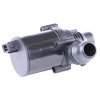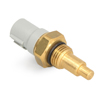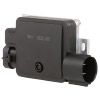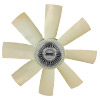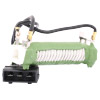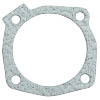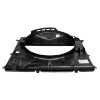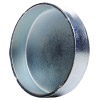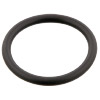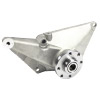Faults of oil cooler
- mechanical damage to the cooler;
- clogging of the cooler;
- wedge of connection hose safety valve;
- damage to the radiator valve;
- damaged hoses.
Symptoms of oil cooler faults
- oil leaks on the radiator;
- dark stains on the expansion tank;
- engine overheating;
- power loss when driving at high speeds;
- loss of engine oil viscosity.
Causes of oil cooler faults
- dust, dirt or moisturegetting into the radiator;
- leakage of the system;
- damage or wear of radiator gaskets;
- looseness of mountings;
- low oil pressure in the system;
- low level of coolant in the system;
- incorrect fastening of hoses.
Diagnostics
When testing the oil radiator operation it is necessary to remove it from the system, after draining the lubricant. First check the work of the safety valve. It must open when the oil pressure is above 0.12 MPa.
Blowing and washing the cooler determines the degree of contamination. It should be noted that it is necessary to wash the radiator with liquid which does not cause corrosion.
Oil radiator of liquid cooling system should be checked for internal injuries. Despite the fact that liquid coolant provides a greater level of cooling, ingress of antifreeze into lubrication system can be fatal for the engine.
The mechanism maintenance should be carried out every 2-3 years. When properly used, the oil cooler service life can reach 10 or more years.
Replacement and repair of the oil radiator
Repair works are relevant only when the radiator is clogged or seals are damaged. In this case, the sealing rings are changed and the system must be cleaned..
When installing the oil radiator attention should be given to the strength of fasteners torsion. The correct tightening torque is 25 Nm. It is recommended to use a torque wrench to monitor this indicator.
When radiator tubes are damaged, even slightly, the part requires a complete replacement.
Engine oil cooler finder for












































































































